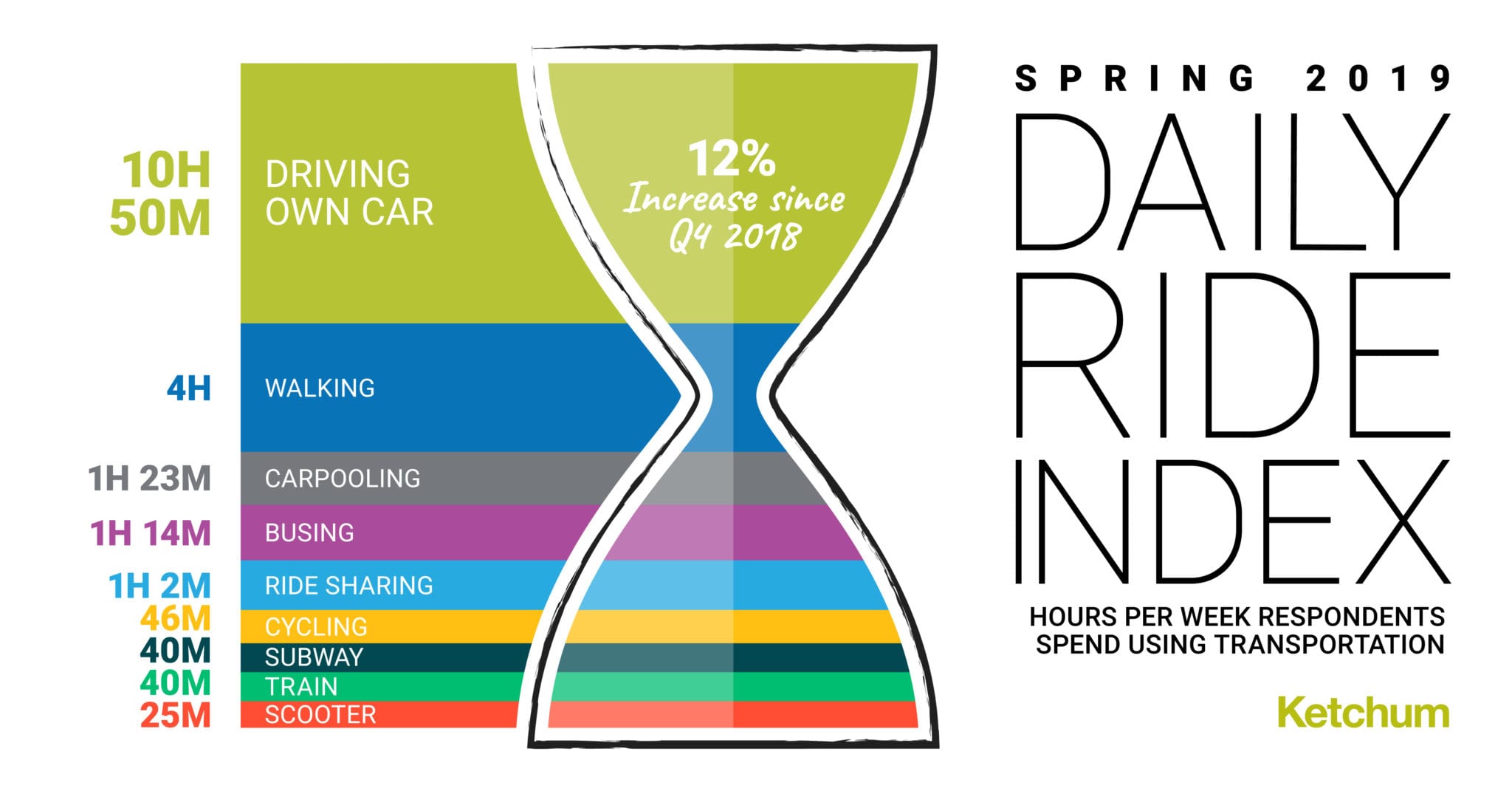Spring has officially arrived when it’s time for the New York International Auto Show. I’m part of a Ketchum team on the ground here at the Jacob Javits Convention Center, supporting clients and seeking insights on what’s happening in our industry.
The show has evolved dramatically since it launched as North America’s first automotive exhibition in – believe it or not – 1900. Yes, it’s still the place to see the next, great, shiny new things. But in the past decade it has become even more than just a car show: it is now a showplace beyond horsepower and steel, including new concepts and technologies that are transforming transit.
The ideas presented in New York are even altering our perception of transit’s role in our lives. But… maybe not to the extent expected.

We’ve just gotten preliminary data back from the spring edition of Ketchum’s Daily Ride Index (you can find the first installment here), our recurring study that provides a pulse check on changing consumer acceptance of new forms of transportation and related technology. Coupled with our observations from presentations and conversations here at the show, they illustrate a few key trends that everyone in the industry should take note of as our attention shifts to new transportation:
Seasons matter. The daily use of personal vehicles has declined since our Fall 2018 report, from 69 percent to 59 percent. That stat alone is not a huge surprise – the nation has endured a pretty miserable winter. And adverse conditions have always impacted how often we drive, especially recreationally.
Still, this seasonal fact of life reinforces the notion that alternative forms of transportation must be more mindful of the impact weather and other seasonal events have on the driving/riding experience. New forms of transportation must seriously address sub-optimal use cases – like bad weather and traffic jams – if they are ever to rival the utility of personal vehicle ownership. Until a better alternative emerges, personal vehicles remain our go-to in less-than-ideal conditions.
We still want to kick the tires. Many online-only used and/or new car dealerships are striving to disrupt the traditional (and, too often, wearisome) brick-and-mortar dealership model. And rare is the manufacturer or dealership that doesn’t offer cyber-shopping.
But only 30 percent of people said they would be very comfortable completing their entire vehicle purchase online, and 35 percent said they would be very uncomfortable.
Here’s what I think: a car isn’t an electric razor or even a mobile phone. It’s a big-time purchase, and most of us in the market to buy or lease want to take test drives, look under the hood and inspect every inch of the vehicles we’re considering before signing on the dotted line. It’s also a very emotional purchase – many people name their cars, but how many people name their refrigerators?
While online shopping is a viable option, the death of the dealership model is far from imminent.
Fill ‘er up. More people than ever are supportive of zero- or low-emission vehicles. But are they putting their money where their hearts are? Traditional gas-powered engines still dominate the overwhelming majority of new car sales – 83 percent of survey respondents said a traditional powertrain would top their shopping list. Electric and hybrid vehicles, or those that run on hydrogen, diesel or other alternative fuels, are finding their niches. But broad acceptance seems far in the distance.
Despite advancements in battery life, speed and reliability, alternative energy vehicles have a long way to go to meet the performance expectations of most consumers. That’s particularly true in harsh-weather environments.
In a few weeks, we will release the full results from Ketchum’s Daily Ride Index. I’ll be curious to see if further observations from this week’s show, coupled with our data, reveal additional insights.
Stay tuned…
For more insights into transportation trends, please contact Kevin Oates, Managing Director, Transportation at Ketchum ([email protected]).



